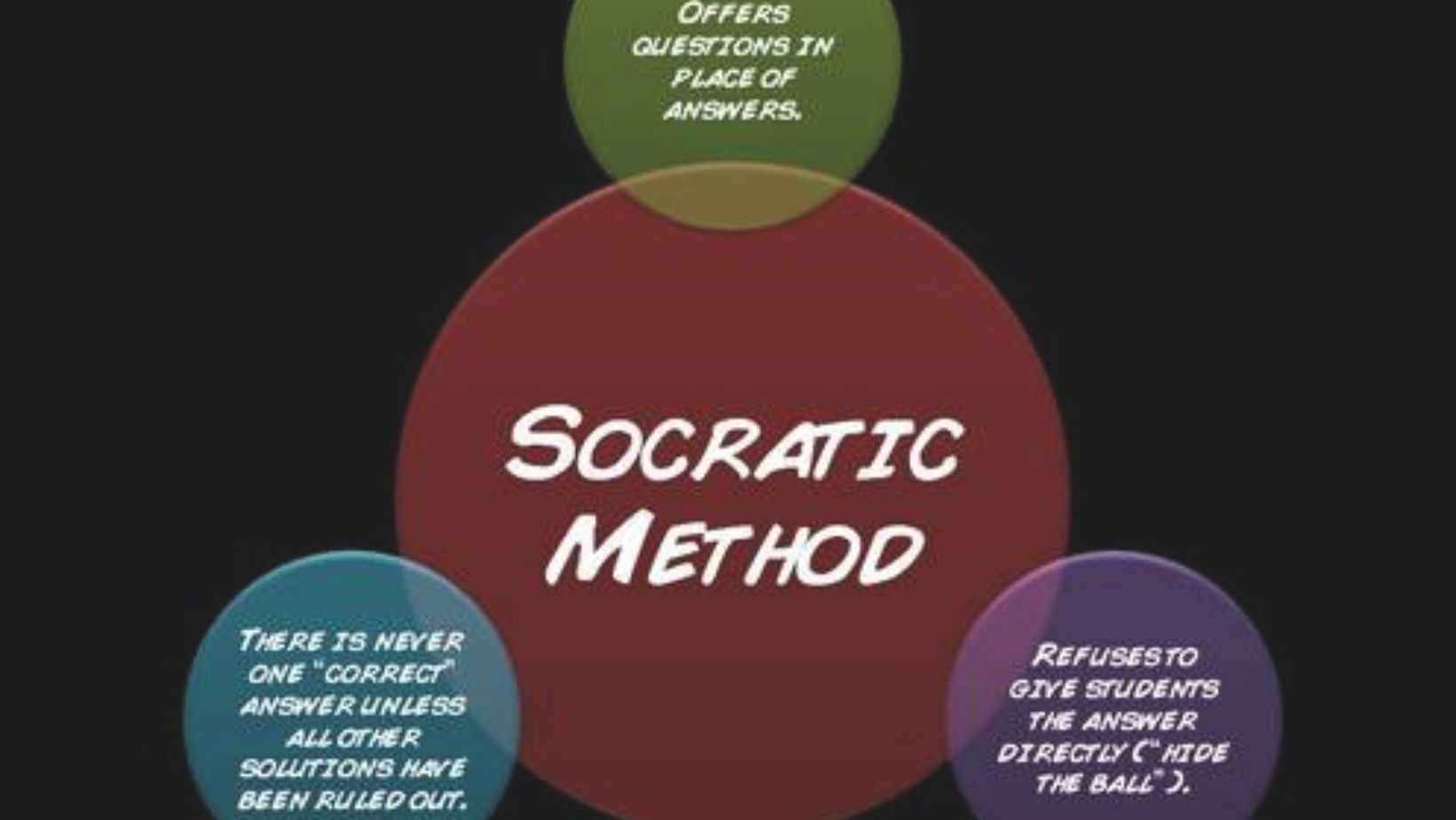Ever wondered why some discussions leave you with more questions than answers, yet somehow, you feel smarter? That’s the magic of the Socratic method at work. Originating from Classical Greek philosophy, this teaching technique isn’t just for law students or philosophers; it’s a powerful tool for anyone looking to sharpen their critical thinking abilities. By fostering an environment where questioning is encouraged and every answer leads to another inquiry, we unlock a whole new level of understanding and insight.
Table of Contents:
- What Is the Socratic Method?
- How the Socratic Method Is Used in Modern Education
- Techniques for Applying the Socratic Method in Teaching
- Benefits and Challenges of the Socratic Method
- Conclusion
What Is the Socratic Method?

The Socratic method is a powerful teaching approach that has existed since Socrates’s time. It involves asking students a series of probing questions to sharpen their critical thinking skills.
The Role of Questioning: Socratic Method
The art of questioning is at the heart of the Socratic method. The teacher poses thought-provoking questions to guide students through critical analysis and reflection.
But it’s not just about asking any old questions. The key is to craft questions that challenge students to think more deeply and critically about the topic. Questions that force them to clarify their thinking, consider alternative perspectives, and justify their reasoning.
Fostering Critical Thinking Skills
Engaging in this type of questioning and dialogue helps students develop critical thinking skills. They learn to analyze complex ideas, evaluate arguments, and think more logically and systematically.
As one Stanford professor puts it, the Socratic method is “better used to demonstrate complexity, difficulty, and uncertainty than to elicit facts about the world.” It’s about exploring a topic’s nuances and gray areas rather than just accepting simple black-and-white answers.
Origins in Classical Greek Philosophy
The Socratic method has its roots in the teachings of the ancient Greek philosopher Socrates. He believed that dialogue and questioning were the paths to wisdom and truth.
Socrates would engage his students in a series of back-and-forth questions and answers, constantly probing and challenging their assumptions. His goal was to help them arrive at a deeper understanding of complex philosophical and ethical issues.
This really shows how asking tough questions and having real conversations have always been the backbone of learning.
How the Socratic Method Is Used in Modern Education: Socratic Method
The Socratic method isn’t just some dusty relic of ancient Greek philosophy. It’s alive and well in modern classrooms, from high school seminars to graduate-level courses.
One of the most famous examples is in law schools, where the Socratic method has long been a staple of legal education. But that’s not all—it also pops up in a bunch of different places, from the boardroom to community centers and even into arts and letters.
Law Schools and Legal Education: Socratic Method
In a typical law school classroom, the professor will call on a student at random and ask them a series of questions about a particular case or legal issue. The student is expected to think on their feet, analyze the facts and arguments, and defend their reasoning.
Law students often find themselves in the thick of it, feeling both pumped and a bit daunted by what lies ahead. But the goal is to prepare them for the rigors of legal practice, where they’ll need to think critically and argue persuasively in real-time.
Engaging Students in the Classroom
But the Socratic method isn’t just for law students. It can be a powerful tool for engaging students in any classroom setting.
Teachers can help students become more invested in the learning process by posing thought-provoking questions and encouraging active participation. Instead of passively absorbing information, students are challenged to grapple with ideas and contribute to the discussion.
This can lead to a more dynamic and interactive classroom environment where students are more likely to stay engaged and motivated.
Promoting Active Learning and Participation
The great thing about the Socratic method is that it gets people really involved in their own learning journey. Instead of just listening to a lecture or memorizing facts, students are actively involved in constructing knowledge.
Students are forced to think critically, articulate their ideas, and defend their positions. This kind of active engagement helps students develop a deeper understanding of the material and retain what they’ve learned more effectively.
One university explains that the Socratic method “encourages students to explore their thoughts and beliefs, also considering how they may contribute to their assumptions about the topic at hand.”
Techniques for Applying the Socratic Method in Teaching: Socratic Method
So, how can teachers effectively use the Socratic method in their classrooms? It’s not just asking random questions and hoping for the best. There’s an art and a science to crafting practical Socratic questions and guiding productive discussions.
Crafting Effective Questions
The key to a successful Socratic dialogue is asking the right questions. The goal is to challenge students to think more deeply and critically about the topic at hand.
Effective Socratic questions are open-ended, thought-provoking, and designed to elicit more than just a simple yes-or-no answer. They often start with words like “why,” “how,” or “what if,” and encourage students to explore multiple perspectives and possibilities.
“Refrain from interpreting or paraphrasing, and come back to what the other person has literally said.”
– Teaching Tips, Brigham Young University
Encouraging Student Responses: Socratic Method
Of course, asking great questions is only half the battle. The other half creates a classroom environment where students feel comfortable and encouraged to participate.
This means establishing clear expectations for respectful dialogue and creating a safe space for students to take intellectual risks. It also means having the patience to give students a beat or two to mull over their answers instead of hurrying to break that quiet moment.
Guiding Discussions to Deeper Understanding
As conversations continue in the classroom, it’s up to teachers to steer students into diving deeper and getting the gist of their learning. This means listening carefully to student responses, asking follow-up questions to clarify and expand their ideas, and helping them connect to other concepts and real-world examples.
It’s also important to be open to unexpected insights and tangents that may arise during the discussion. Some of the most powerful learning moments can come from exploring ideas that weren’t necessarily part of the original lesson plan.
Ultimately, the goal is not just to arrive at a “correct” answer but to help students develop the critical thinking skills and intellectual curiosity that will serve them well beyond the classroom.
Benefits and Challenges of the Socratic Method: Socratic Method

Like any teaching approach, the Socratic method has strengths and limitations. When you nail how to use it right, this tool becomes your secret weapon for sparking real thought, getting everyone involved, and encouraging a deep dive into learning. However, it also comes with some challenges and potential drawbacks.
Developing Analytical Skills
The beauty of the Socratic method lies in its power to sharpen students’ minds, giving them the tools to dissect complex ideas and think critically about the world around them. Students learn to break down arguments, evaluate evidence, and think logically and systematically by grappling with complex questions and ideas.
These skills are valuable not just in academic settings but in all aspects of life. Whether analyzing a complex social issue, making a difficult decision, or solving a problem at work, students who have honed their critical thinking skills through Socratic dialogue will be better equipped to navigate their challenges.
Preparing Students for Real-World Challenges
In addition to developing critical thinking skills, the Socratic method can also help prepare students for real-world career and personal challenges.
By engaging in rigorous, open-ended discussions and learning to articulate and defend their ideas, students gain valuable experience in communication, collaboration, and problem-solving. They learn to think on their feet, consider multiple perspectives, and adapt to new information and changing circumstances.
Addressing Potential Drawbacks and Criticisms
Of course, the Socratic method is not without its critics. Some argue it can be intimidating or alienating for shy or introverted students, who may feel put on the spot or uncomfortable speaking up in class.
Others point out that the effectiveness of Socratic dialogue depends heavily on the teacher’s skill and sensitivity. A poorly facilitated discussion can easily go off the rails, leaving students confused or disengaged.
There are also concerns that the Socratic method may not be as well-suited for teaching certain types of content, such as technical skills or factual knowledge. And some critics argue that it can reinforce power imbalances in the classroom, with the teacher holding all the cards and students feeling pressure to give the “right” answers.
Sure, some folks have doubts about the Socratic method, but its fans are quick to point out that those hurdles aren’t too high to jump over with a little smart planning and skillful guiding. Teachers can harness the power of Socratic dialogue while mitigating its potential drawbacks by creating a supportive classroom culture, using various questioning techniques, and being attentive to individual student needs.
Ultimately, the Socratic method is just one tool in a teacher’s toolkit. However, if you know what you’re doing and use it wisely, it can change how students learn and grow.
Key Takeaway: Socratic Method
Dive deep into critical thinking with the Socratic method, a teaching style that uses strategic questioning to challenge assumptions and boost reasoning skills. It’s not just for philosophy or law students; this approach helps anyone develop sharper analytical abilities by engaging in thought-provoking dialogue. Perfect for fostering a lively, interactive classroom atmosphere.
Conclusion: Socratic Method
In our journey through exploring the essence of the Socratic method, we’ve uncovered that it’s not about having all the right answers but rather about asking better questions. This age-old technique has shown its enduring relevance by helping us think more deeply and critically about everything around us. So next time you’re faced with a complex problem or decision, remember – adopting a bit of Socrates’ curiosity might just lead you to discover solutions you never thought possible. Digging deep and asking the right questions, along with being okay not having all the answers straight away, really is where learning hits its stride.

